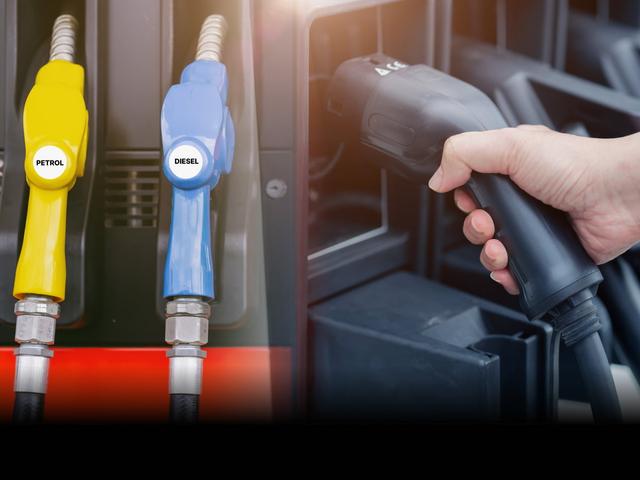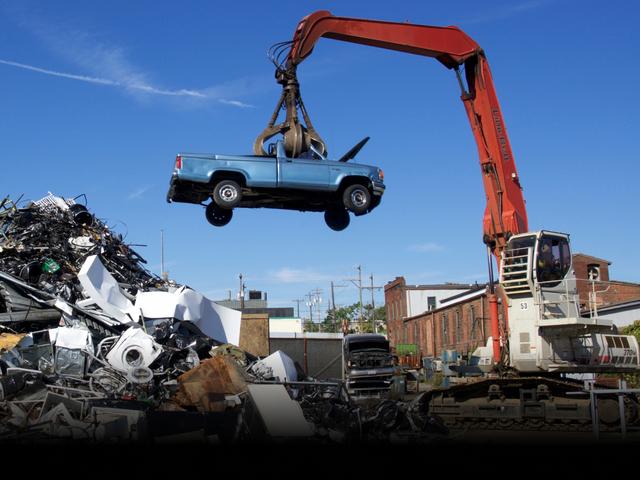Understanding the common gearbox problems and their causes can make it easier to identify the issues early, and take preventive action. A car’s transmission, whether manual, automatic, or semi-automatic, is essential for transferring power from the engine to the wheels. Due to the complexity and operation, it's prone to wear and tear, which can lead to various issues over time.
Whether there’s difficulty in shifting gears, or unusual grinding or clunking noises, or a burning smell, these could all be early indicators of gearbox problems. Addressing these issues promptly can prevent severe damage and expensive repairs down the line. We list common gearbox problems, explore their causes, and provide practical solutions and preventive tips to maintain the vehicle's gearbox in optimal condition.
List of common car gearbox problems, their causes, and solutions
Grinding noise from the transmission
Grinding noise from the gearbox is one of the most common problems car owners may encounter. This unsettling sound can indicate a range of issues, from minor to severe. Different noises can signal different underlying problems: a clicking or tapping noise may suggest worn gears, while a whining or grinding noise often indicates misalignment or lack of lubrication.
- Grinding Noise: Causes
- Low Transmission Fluid: Insufficient or degraded transmission fluid can lead to poor lubrication and increased friction, leading to grinding noise from the transmission.
- Clutch Issues: Issues in the clutch assembly or damage to clutch components, especially in manual transmissions can lead to grinding sounds, or in serious cases even difficulty in changing gear.
- Torque Converter Issues: In automatic transmissions, a faulty torque converter can cause grinding sounds during gear changes.
- Poor Driving Habits: Aggressive gear shifting while driving, overloading, or other poor driving practices can cause or worsen grinding noises.
- Internal Damage: Damage to gears or the components controlling gear shifts, like linkages, worn bushes or other internal components may also cause a grinding noise.These may require professional inspection.
- Grinding Noise: Solutions
- Identify the source of the Noise: Determine the type and source of the noise, check for visible signs of wear and tear, and ensure the gearbox is properly aligned.
- Maintenance: Ensure the lubrication system is functioning correctly, and replace the transmission fluid regularly to maintain fresh lubrication.
- Professional Help: If the noise persists, seek professional help to repair or replace any damaged gears or components.
Stiff, hard-to-shift or stuck gear lever
The gear stick is crucial for changing gears in a car with a manual transmission. However, drivers may sometimes encounter a stiff gear lever or find it difficult to change gears. Sometimes, the car may be stuck in gear. These situations can impede the safety of the drive and impact the overall driving experience.
- Stiff, Hard-to-Shift or Stuck Gear Lever: Causes
- Lack of Lubrication: Insufficient lubrication increases friction when changing gears, making it difficult to shift gears.
- Synchroniser Issues: Worn or damaged synchronisers can fail to synchronise the gear with the engine’s speed, and make shifting into specific gears difficult.
- Damaged Gear Linkages and Faulty Sensors: These may be another reason that affect the gear lever’s movement and make it challenging to change gears while driving.
- Worn Clutch System: The clutch system, which includes the clutch plate or clutch disc, can wear out over time and may lead to resistance while engaging gears.
- Weather Factors: Extreme weather conditions, like very low temperatures, can affect the viscosity of the transmission fluid, causing a stiff gear lever.
- Stiff, Hard-to-Shift or Stuck Gear Lever: Solutions
- Regular Maintenance: Follow the recommended maintenance schedule recommended in the owner’s manual, including regular oil changes and lubrication checks. Use high-quality transmission fluid suitable for the vehicle’s specifications.
- Proper Driving Techniques: While driving, resting the hand on the gear lever should be avoided to prevent unnecessary pressure and premature wear. Fully engage the clutch pedal before changing gears and avoid abrupt gear changes.
- Professional Assistance: If it gets harder to change gears, a professional must be promptly consulted.
Slipping gears when driving
.jpg)
Gear or transmission slipping can affect both manual and automatic transmissions and significantly disrupt the driving experience. Essentially, slipping in and out of gears means the transmission needs attention. These kinds of issues may result in loss of power, reduced vehicle speed, or jerky movements.
- Slipping Gears: Causes
- Low or Bad Transmission Fluid: Insufficient fluid can cause the transmission to slip. Moreover, transmission fluid may turn brown or black over time, indicating that it needs to be flushed and replaced.
- Worn Transmission Bands: In CVT gearboxes, the transmission bands can wear out, and the transmission may slip.
- Solenoid Failure: The solenoid controls the flow of transmission fluid. A failing solenoid can disrupt this flow, causing the transmission to slip.
- Damaged Gears or Clutch Assembly: Worn or malfunctioning gears and clutch assembly can cause the transmission to slip.
- Torque Converter Issues: This is an issue that comes up only in automatic vehicles. In automatic cars, the torque converter helps the transmission change gears smoothly. Thus, a faulty torque converter may cause shaking, and slipping.
- Slipping Gears: Solutions
- Regular Change of Transmission Fluid: Ensure optimum fluid levels and replace degraded fluid regularly.
- Regular Maintenance: Regular maintenance is the key in preventing slipping gears while driving. Ensure that regular inspection and repair of transmission components like transmission bands, solenoid, and gears is carried out and damaged parts are repaired or replaced.
- Consult a Professional: For complex issues like clutch assembly damage or torque converter problems, seek professional assistance.
Gear not engaging or delayed engagement
.jpg)
It can be frustrating to drive a vehicle where the transmission struggles to engage into gear, or there is a delay in engaging. This may be caused by a faulty shifter cable, transmission fluid leak, or in case of automatic transmissions; a fault in the valve body. Issues like the transmission not engaging or staying in gear, or even a slightly delayed gear engagement can indicate various underlying gearbox problems that need timely attention.
- Gear Not Engaging or Delayed Engagement: Causes
- Transmission Fluid Issues: Incorrect fluid levels, dirty or burnt fluids may affect gear engagement.
- Issues in Filter and Solenoids: One may encounter a delayed gear engagement or a complete non-engagement of gear, if the transmission components like transmission filters, and solenoids (valves) are clogged or faulty.
- Misaligned Gearbox: Thermal expansion or mechanical issues may cause misalignment and gear engagement problems.
- Malfunctioning Shift Lock Release: In automatic transmissions, a stuck shift lock mechanism may cause issues in changing gears.
- Clutch Failure: Hydraulic fluid leaks in the clutch master cylinder may cause issues with clutch engagement.
- Gear Not Engaging or Delayed Engagement: Solutions
- Transmission Fluid and Maintenance: Regularly check and maintain proper transmission fluid levels, and quality to prevent gear engagement issues.
- Repair Worn Components: Regularly inspect and replace damaged or worn components like filters, solenoids, clutch components, and shift linkage cables to avoid major gearbox problems.
- Seek professional assistance: Call a mechanic for complex gearbox issues like misaligned transmission or malfunctioning shift lock.
Leaking gearbox oil
.jpg)
Experiencing gearbox oil leaks can compromise the performance and longevity of the vehicle's transmission system. These leaks often stem from internal pressure imbalances or mechanical vulnerabilities, necessitating timely identification and resolution to prevent further damage to the transmission.
- Leaking Gearbox Oil: Causes
- Excessive Lubricant: Overfilling the gearbox may cause pressure buildup, forcing oil through the seals.
- Damaged Oil Seals: Worn or cracked seals lose their ability to contain the transmission oil effectively.
- Ventilation Issues: Blocked vent holes may create internal pressure, causing leaks in the vehicle’s gearbox.
- Vibration and Contaminants: Vibrations may wear out seals and gaskets, while contaminants may damage oil shafts, resulting in leaks.
- Temperatures: High temperatures may lead to thinning of oil, making it prone to leakage.
- Leaking Gearbox Oil: Solutions
- Maintaining Oil Levels: Regularly checking and maintaining gearbox oil at the recommended level can help prevent overfilling.
- Inspect and Replace Seals and Pipelines: Periodically inspecting seals and pipelines, and replacing worn or damaged ones can help prevent leakage and prevent transmission problems.
Clunking noise from the transmission
Clunking noises in the vehicle can be alarming and often indicate serious gearbox problems. These sounds typically point to issues within the transmission system, such as insufficient lubrication, damaged gears, or incorrect sensor data.
- Clunking Noise: Causes
- Low or degraded Transmission Fluid: Inadequate lubrication due to low or degraded transmission fluid causes friction between the metal components, producing clunking noises.
- Incorrect Sensor Data: Faulty sensors can send wrong shifting or speed information, leading to improper gear shifts and clunking sounds.
- Internal Component Issues: Problems with internal components like gears, springs, or bearings can cause the transmission to shift improperly, resulting in clunking noises.
- Broken or Loose Mounts: Loose or broken transmission or engine mounts allow excessive movement, creating clunking noises during gear changes.
- Faulty Universal Joints: Worn or malfunctioning universal joints can produce noises that mimic transmission clunks.
- Clunking Noise: Solutions
- Use High-Quality Transmission Fluids: Using premium fluids to enhance lubrication can help reduce clunking noises.
- Replace Worn Components: Regularly inspect and replace worn or damaged components to eliminate the source of the noise.
- Check and Secure Mounts and Fasteners: Replace worn gearbox mounts and ensure all bolts and fasteners are securely tightened to stabilize the transmission and reduce noise.
Burning Smell from the gearbox
A burning smell in the car can stem from various issues, such as burnt tyre, a clogged heater, an electrical short circuit, leaking coolant, or degraded engine oil. However, the reasons that concern the gearbox may include transmission fluid leakage, and by some extension, a slipping clutch.
- Burning Smell: Causes
- Leaking Transmission Fluid: Several factors may lead to a transmission fluid leak in the car. This may result in lack of proper lubrication, causing increased friction and heat within the car gears. This can be a key reason for encountering a burning smell in the car.
- Slipping Clutch: Slow release of the clutch pedal causes the clutch disc to slip, creating excessive friction and a burning smell during gear changes. This may even be caused by worn clutch components and improper or excessive clutch use.
- Burning Smell: Solutions
- Maintain Regular Checks on Transmission Fluid: Transmission fluid should be changed and lines, gaskets, and filters should be replaced periodically to ensure that the colour is red or pinkish, but not brown, black or sludgy.
- Inspect and Replace Worn Clutch: Never drive while resting your foot on the clutch pedal. Inspect the clutch and replace it if necessary to prevent further gear changing problems.
- Consult a professional: A burning smell from the clutch or transmission may indicate serious transmission issues, or the clutch. It is best advised to consult a professional.
Gear not shifting in a manual car
.jpg)
Experiencing difficulty in shifting gears when driving a vehicle with a manual transmission can stem from several gearbox problems. These gear issues can significantly impact the vehicle's performance. Identifying the root cause is crucial for preventing further damage.
- Gear not shifting in vehicle with a manual gearbox: Causes
- Low Transmission Fluid Level: Low fluid can prevent gear changes while driving and may even damage the transmission.
- Contaminated Transmission Fluid: Driving through flooded roads may introduce water into the transmission fluid, requiring a professional inspection and repair.
- Worn Out Gear Lever Assembly: Excessive play due to a worn-out gear lever assembly or bushes can make changing gear difficult.
- Clutch Related Issues: Low fluid in the master cylinder, air trapped in clutch hydraulics, or a broken clutch cable can impede proper clutch function.
- Bad Sequencers: Failed sequencers can cause grinding sounds and difficulty in shifting into the next gear.
- Gear not Shifting in Manual Car: Solutions
- Check and Refill Transmission Fluid: Ensure proper transmission fluid levels and replace contaminated fluid.
- Inspect and Replace Worn Components: Replace the gear lever assembly, bushes or clutch cable if worn or broken.
- Consult a Mechanic: It is crucial to seek a professional’s help to identify and fix the exact problem.
Tips for preventing common gearbox problems
Now, the question is how to avoid common gearbox problems? Preventing gearbox problems involves a few simple but crucial steps. By following these tips, drivers can avoid common gearbox issues and keep their vehicles running smoothly.
- Regularly check transmission fluid levels: Maintaining correct levels of transmission fluid is vital, as low fluid levels can lead to insufficient lubrication, and may increase the risk of problems with the transmission.
- Avoid overheating the transmission: Overheating can cause severe gearbox problems, such as damaged or cracked gears, broken seals, and faulty bearings. Pushing the car beyond its capacity must be avoided to ensure there’s no overheating.
- Use the hand brake: When parking, always engage the car's hand brake, in addition to leaving the car in gear in a manual transmission, or in ‘Park’ in the case of an automatic. This prevents unnecessary strain on the gearbox and reduces wear. Additionally, should the vehicle slip out of gear, the hand brake will not allow the vehicle to roll.
- Proper gear shifting: Incorrect gear shifting can lead to issues with the transmission and care must be given to changing gears properly.
- Avoid overloading the car: Stick to the vehicle's recommended load capacity is essential to avoid gearbox issues in the long run, as overloading may lead to strains on the transmission.
- Regular servicing and annual check-ups: Regular servicing and annual check-ups are absolutely essential in maintaining the powertrain and transmission in the optimum health. This can help identify and address potential problems before they become major issues.
Understanding how to use and maintain the transmission to avoid major problems with the gearbox is crucial to the health of the vehicle. It is imperative to understand how to identify and diagnose problems you may face with the transmission of a vehicle when driving, and the preventive measures you can take to avoid them. Paying attention to the small details like flushing and changing the transmission fluid at recommended intervals, smoothly changing gears with the gear lever, not resting your foot on the clutch pedal can prevent most of the problems that may occur. While correctly maintaining the transmission will prevent most issues, it is best to visit a trained mechanic after the first signs of any major faults with the transmission.
FAQ
Q. What causes difficulty while shifting gears when driving?
Difficulty in changing gears may be caused by several factors, some of which include insufficient lubrication, worn out clutch components, issues with the gear synchroniser, linkages, and sensors, and even weather conditions, which may affect viscosity of the transmission fluid. Professional help must be sought if gear shifting problems are experienced while driving.
Q. How do you check the gear oil level?
Modern vehicles do not have transmission fluid dipsticks to check the levels. Usually, the transmission fluid is checked and replaced during periodic vehicle servicing. However, modern cars are equipped with sensors that warn and alert the driver should the vehicle detect it is low in transmission fluid. Some premium cars are equipped with onboard diagnostic systems that offer transmission fluid level indicators.
Q. How much does it cost to fix the gearbox of a car?
The cost to fix transmission issues may vary depending on the cause of the problem and also the make and model of the car. Minor repairs may cost less, but major repairs or a full gearbox replacement may cost more.
Q. Why is my car’s gearbox not shifting smoothly?
There can be several reasons why the transmission may not change gears smoothly when driving. These may include low or degraded transmission oil, wear and tear of clutch components, synchroniser issues, faulty components like linkages, sensors, filters and solenoids, or even as minor as poor or incorrect driving habits and improper use of the clutch.













.webp&w=828&q=75)



















.jpg&w=640&q=75)



